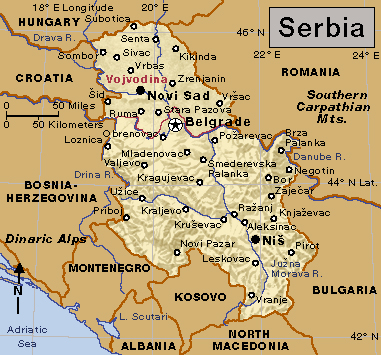Vojvodina, << VOY vuh dee nuh, >> is a province in northern Serbia. It lies in a mostly flat region known as the Pannonian Plains and shares a border with Hungary to the north, Romania to the east, and Croatia to the west. Vojvodina has a population of about 2 million people. The province is autonomous—that is, it has a large degree of control over its own affairs. Novi Sad is the province’s capital and largest city.

The Danube and Tisa rivers divide Vojvodina into the regions of Backa, Banat, and Srem. Serbs make up the largest ethnic group in Vojvodina. The province also has a strong Hungarian minority. Vojvodina is a rich agricultural region. The province’s industries include chemical, food, and oil processing, as well as metalworking and construction.
Over the centuries, Vojvodina has been ruled by a number of groups, including the Romans, Huns, Hungarians, Croatians, Ottomans, and Austrians. In 1918, Vojvodina became part of the Kingdom of the Serbs, Croats, and Slovenes, which was later renamed Yugoslavia. The 1946 and 1974 Constitutions of socialist Yugoslavia made Vojvodina an autonomous province within Serbia.
In 1990, under the rule of Serbian President Slobodan Milošević, the province lost most of its independence. The Serbian legislature restored Vojvodina’s autonomy in 2002.
